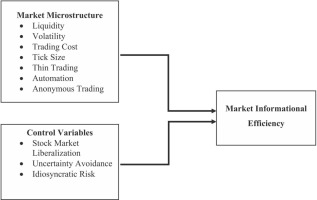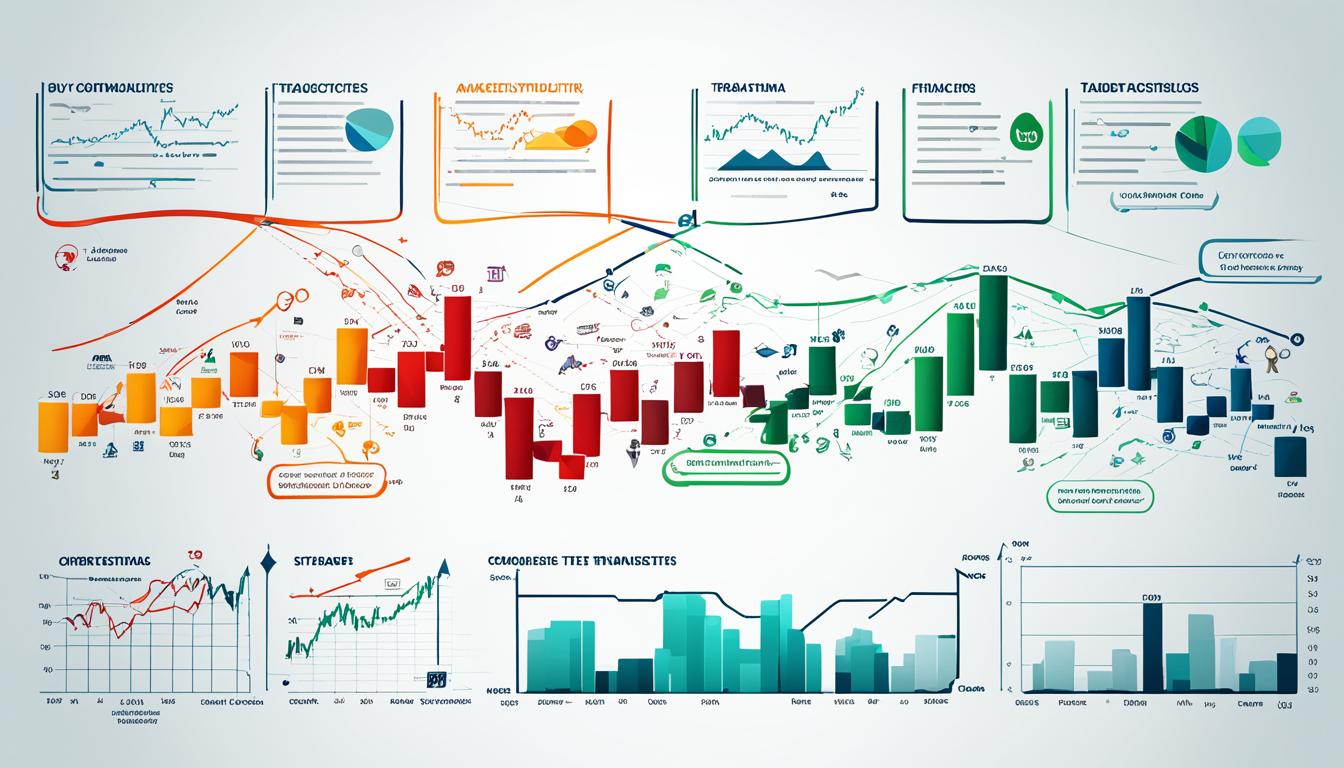Did you know that the average bid-ask spread is often thinner than a piece of paper? In the world of institutional trading, understanding market microstructure is key to navigating the complexities of trade execution. This article explores the essentials of market microstructure, detailing its influence on trade execution and the crucial role of liquidity. We’ll dive into how bid-ask spreads, order types, and information asymmetry affect institutional trades, as well as the impact of market depth and trading costs on strategies. Additionally, we'll examine the role of market makers, trade timing, and the effects of regulation on market microstructure. Finally, we'll address the challenges of trading large volumes and highlight differences across asset classes, all while showing how information flows shape institutional trading strategies. For a deeper understanding of these dynamics, DayTradingBusiness is here to help you master the art of trading.
What is market microstructure in institutional trading?
Market microstructure in institutional trading refers to how trading occurs at the transaction level, including order types, bid-ask spreads, and trading venues. It influences how institutions execute large orders efficiently, minimizing market impact and costs. Understanding microstructure helps institutions optimize trade timing, reduce slippage, and improve price discovery.
How does market microstructure influence trade execution?
Market microstructure shapes how trades are executed by determining the order book dynamics, bid-ask spreads, and liquidity. It affects the speed and cost of executing large institutional trades, as tighter spreads and deep liquidity enable quicker, cheaper transactions. Microstructure features like order types and trading venues influence price impact and transparency, helping institutions minimize market impact. Ultimately, understanding microstructure helps traders optimize timing and strategies, reducing slippage and improving execution efficiency.
Why is liquidity important in market microstructure?
Liquidity matters in market microstructure because it ensures smooth, efficient trading for institutions. It allows quick execution of large orders without drastic price changes, reducing costs and market impact. High liquidity minimizes bid-ask spreads, making trading cheaper and more predictable. Without sufficient liquidity, institutions face higher risks and prices can become volatile, hampering effective trading strategies.
How do bid-ask spreads affect institutional trading?
Bid-ask spreads impact institutional trading by increasing transaction costs, making large trades more expensive. Narrow spreads mean cheaper execution, while wider spreads can force institutions to pay a premium, reducing overall profitability. Spreads also affect trade timing; wider spreads may delay trades to avoid high costs. Market microstructure, through bid-ask spreads, influences liquidity and the ability of institutions to execute large orders efficiently.
What role do order types play in market microstructure?

Order types shape market microstructure by determining how trades are executed, influencing liquidity, price discovery, and market efficiency. They control the flow of buy and sell orders, affecting depth and volatility. Different order types—like market, limit, and stop orders—allow institutional traders to manage risk, minimize costs, and execute strategies precisely within the market’s micro-level framework.
How does information asymmetry impact institutional trades?
Information asymmetry gives informed traders an advantage, enabling them to execute institutional trades at better prices. It can cause market impact, increasing spreads and reducing liquidity, which makes large trades more costly and risky. When insiders or knowledgeable traders act on private info, it can lead to market inefficiencies, pushing prices away from true value. This imbalance encourages strategic order placement and can result in less transparent, less efficient markets.
What is the impact of market depth on trading strategies?
Market depth affects trading strategies by revealing liquidity and potential price movements. Deep markets allow larger trades without big price swings, enabling institutions to optimize entry and exit points. Shallow markets increase slippage and risk, prompting traders to use smaller orders or timing tactics. Understanding market microstructure helps traders anticipate price impact, avoid costly errors, and execute strategies more efficiently.
How do trading costs relate to market microstructure?
Trading costs are directly influenced by market microstructure because it determines how orders are processed, the bid-ask spreads, and the liquidity available. Market microstructure details how trading venues, order types, and information flow impact transaction costs for institutions. Better microstructure design reduces spreads and slippage, lowering trading costs. Conversely, poor microstructure can increase costs due to higher spreads, delays, and information asymmetries.
What are the main factors affecting price discovery?
Main factors affecting price discovery in market microstructure include bid-ask spreads, order book depth, trade volume, speed of order execution, information asymmetry, and the presence of high-frequency trading. These elements influence how quickly and accurately prices reflect new information during institutional trading.
How do market makers influence institutional trading?
Market makers provide liquidity and narrow bid-ask spreads, making it easier for institutions to execute large trades without impacting prices too much. They facilitate smoother, faster transactions, reducing market impact and execution risk for institutional traders. By continuously quoting buy and sell prices, market makers help institutions buy or sell sizable positions efficiently, ensuring market stability. Their role in market microstructure directly supports institutional trading by enabling more efficient, lower-cost transactions.
Learn about How Do Market Makers and Liquidity Providers Affect Day Trading?
What is the importance of trade timing in market microstructure?

Trade timing in market microstructure is crucial because it affects liquidity, price impact, and execution quality. Timing determines when large orders are placed, minimizing market disruption and slippage. Proper timing helps institutional traders avoid adverse price movements and get better fill prices. It also allows traders to leverage short-term liquidity fluctuations and news releases for optimal execution. Overall, precise trade timing enhances efficiency and reduces costs in institutional trading.
How does market microstructure affect algorithmic trading?
Market microstructure shapes how algorithmic trading executes orders, affecting speed, cost, and liquidity. It determines how order books function, bid-ask spreads, and price discovery, all crucial for algorithms to optimize trade execution. Microstructure nuances influence how algorithms detect market signals and react, impacting trade timing and impact. For institutional traders, understanding microstructure helps minimize market impact and slippage, improving overall trading efficiency.
Learn about How Do Market Makers and Liquidity Providers Affect Day Trading?
What impact does regulation have on market microstructure?
Regulation shapes market microstructure by setting rules that influence trading practices, order types, and transparency. It can reduce information asymmetry, enhance fair pricing, and prevent manipulation. Regulations like trading halts or minimum tick sizes impact liquidity and order flow. Overall, regulation modifies how institutional traders access markets, execute trades, and manage risks within the microstructure framework.
How do transaction costs vary with market conditions?
Transaction costs rise in volatile, illiquid, or unpredictable market conditions due to wider bid-ask spreads, increased price impact, and higher order execution risks. During calm, liquid markets, costs decrease as spreads narrow and trades execute smoothly. Market microstructure influences these variations by determining how orders are processed, the depth of the order book, and the speed of trade execution, all of which affect transaction costs under different market states.
What are the challenges of trading large volumes?
Trading large volumes can cause price slippage, making it hard to execute orders at desired prices. It often leads to market impact, moving prices against the trader’s interest. Liquidity risks increase, especially if the market isn’t deep enough to absorb big trades without significant price changes. Timing becomes critical; executing large trades slowly can reveal strategy or cause unfavorable price movements. Managing order fragmentation and avoiding market disruption requires sophisticated microstructure understanding.
How does market microstructure differ across asset classes?

Market microstructure varies across asset classes because each has different trading behaviors, liquidity levels, and participant types. In equities, order books are deep with high-frequency trading, while fixed income markets rely more on dealer-based systems with less transparency. Forex markets operate 24/7 with decentralized trading, unlike centralized stock exchanges. Commodities often see physical delivery and seasonal patterns, affecting how microstructure influences trading. These differences shape how institutional traders execute orders, manage liquidity, and minimize market impact across asset classes.
How do information flows shape institutional trading strategies?
Information flows determine how quickly and accurately traders react to new data, shaping their timing and order placement. Fast, reliable info reduces uncertainty, enabling institutions to optimize execution and minimize costs. When information flows are smooth and transparent, strategies become more precise, focusing on exploiting small price movements. Conversely, poor info flow leads to delays, increased slippage, and risk of market impact. Institutions tailor their trading tactics—like algorithmic execution or dark pools—based on the quality and speed of information dissemination within market microstructure.
Learn about How Do Institutional Traders Influence Day Trading Strategies?
Conclusion about What Is the Role of Market Microstructure in Institutional Trading?
In summary, understanding market microstructure is crucial for institutional trading as it directly influences trade execution, liquidity, and overall trading costs. Factors such as bid-ask spreads, order types, and information asymmetry play significant roles in shaping trading strategies and outcomes. Additionally, market depth, regulation, and the behavior of market makers further complicate the landscape. For those looking to enhance their trading strategies and navigate these complexities, DayTradingBusiness offers valuable insights and resources to help maximize success.